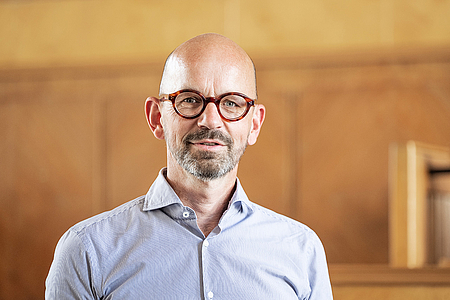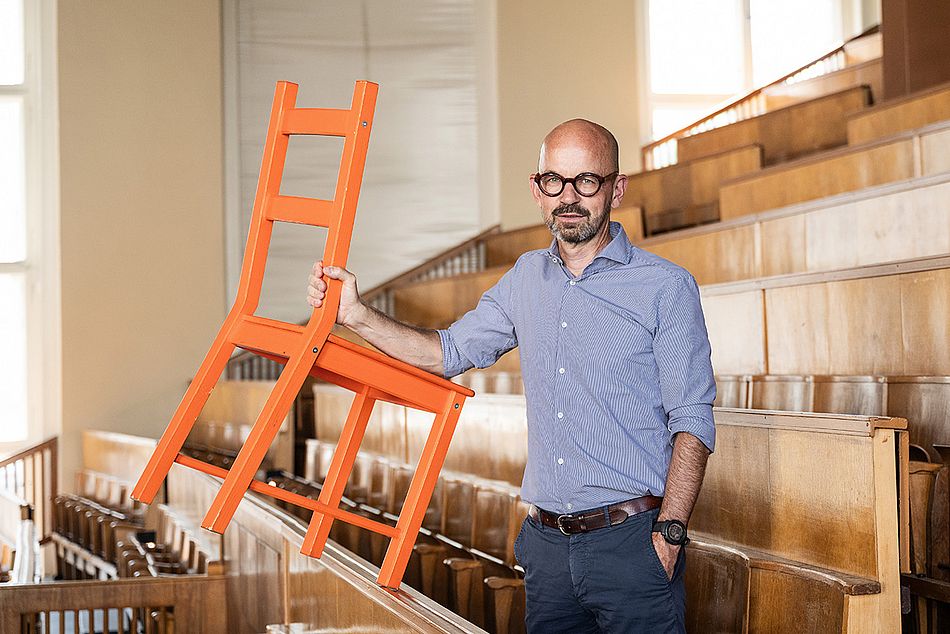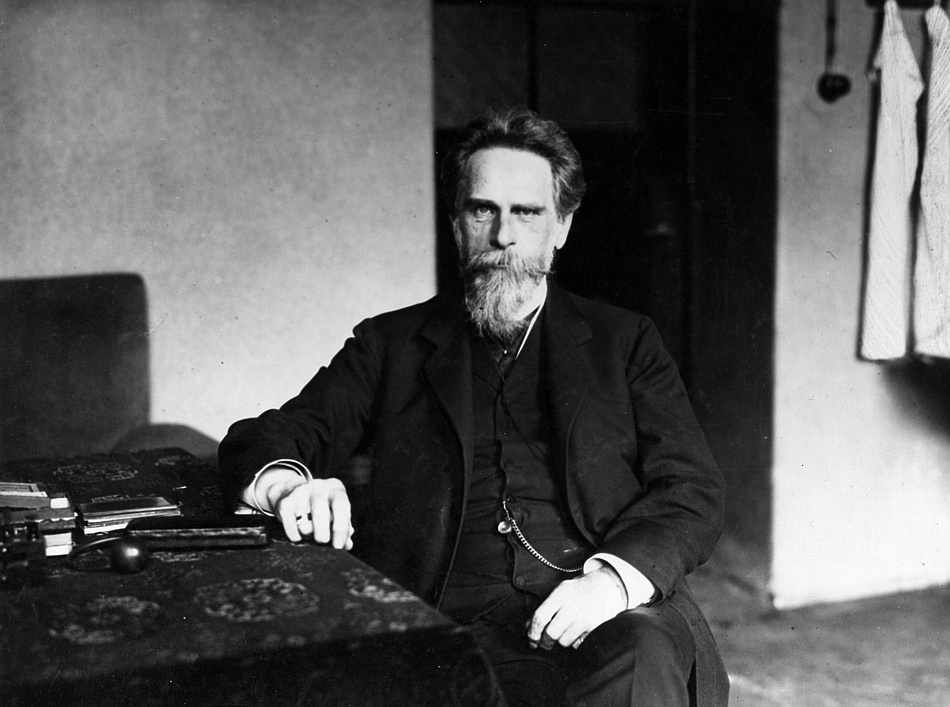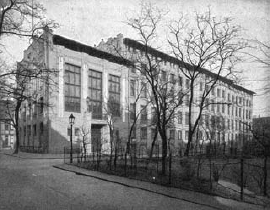The Opening of the Max Rubner Center on Hessische Straße – The History of Medicine meets Modern Research
The tram rumbles down Invalidenstraße, the sound rising above the steady roar of traffic in the heart of Berlin. You can still hear it over by the charmingly dilapidated Humboldt University north campus library, which draws admiring glances from passersby. You turn to a building situated to the left. Despite its unassuming exterior facing the street, Hessische Str. 3–4, just north of Campus Charité Mitte, is an address that has played a significant role in the history of medicine.
Construction of the new institute for hygiene for the University of Berlin (as it was then known) began in summer 1903. It was to be built on the site of the old Charité churchyard under the supervision of the Prussian architect Max Guth. A driving force behind the project was “Privy Counsellor for Medicine“¹ Dr Max Rubner. In 1891, Rubner was appointed to replace Robert Koch as Director of the Institute of Hygiene.² His most convincing argument for a new building was that the previous rooms on Klosterstr. were far from the other university buildings, especially the medical clinics and the Department of Anatomy. Rubner’s lectures were consequently not well-attended by the medical students. At the same time, Rubner saw the construction of a new teaching and research institute on Hessische Str. as an opportunity. Here was a chance to ensure that its design would incorporate the growing knowledge of hygiene at the time and enable modern scientific work to take place:
“The new building not only had a low-pressure steam heating system with four boilers, but also sufficient spaces for hygienic and bacteriological work. The installation of sash windows ensured efficient lighting and ventilation. The workstations were connected to gas and water and the worksurfaces were covered with linoleum. The rooms for dangerous diseases were generally built without wooden parts. The animals used for experiments were no longer in the basement and were instead kept in an auxiliary building. The six floors of the main building were connected by an elevator for people and goods. This could be controlled either by an elevator operator or at the push of an electric button.”³

Funding program
Project and event funding
Funding period
2023
Specialism
Pharmacology
Project
Opening Symposium of the Max Rubner Center for Cardiovascular Metabolic Renal Research
Institution
Charité – Universitätsmedizin Berlin
2023 – present
Vice Dean of Research (Clinical Affairs), Charité – Universitätsmedizin Berlin
2013 – present
Director of the Center for Cardiovascular Research (now: Max Rubner Center), Charité – Univer-sitätsmedizin Berlin
2004
Habilitation in Experimental Pharmacology
One hundred and twenty years later, I go to Hessische Str. 3–4 with our trainee Marike de Vries from Stiftung Charité to meet Prof. Ulrich Kintscher. He is Director of the Max Rubner Center, Director of the Institute of Pharmacology, and Vice Dean of Research (Clinical Affairs) at Charité. Gathered in his office, we take a close look at historical documents like the Zentralblatt der Bauverwaltung (Central Journal of Construction Administration) from 1904, and black and white photos of the old Institute of Hygiene. There is also an event poster on the table, although this one is freshly printed in color; the international opening symposium of the Max Rubner Center (MRC) for Cardiovascular Metabolic Renal Research is nearly upon us and will take place from September 28–29, 2023. Stiftung Charité is supporting the two-day event with our project and event funding program.
There are three reasons to celebrate. The renovation works at Hessische Str. are complete, meaning that new and returning research groups can move in. And then there’s the strategic restructuring of the former Center for Cardiovascular Research and its renaming as the Max Rubner Center for Cardiovascular Metabolic Renal Research. Just as in Rubner’s time, this restructuring is closely connected to the modernized building itself. The new interdisciplinary research center is home to three cardiological clinics, as well as the Department of Nephrology, the Department of Endocrinology, the Institute of Experimental Endocrinology, the Institute of Laboratory Medicine, the Institute of Translational Physiology, and the Institute of Pharmacology. It also houses the working group of the Johanna Quandt Professor Ute Scholl from the Berlin Institute of Health. Innovative therapies for prevalent and life-threatening diseases like diabetes and heart or renal failure will be researched within a space designed to facilitate innovation and collaboration.
Kintscher tells us that the idea to establish a center like this came about twenty years ago. He also points out the historic building – a stone’s throw from the ARD television studios today – which used to house the pharmacology department. And he tells us about his 2002 move from cardiology to work with Prof. Thomas Unger, whom he would later replace as Head of the Center for Cardiovascular Research and Director of the Institute of Pharmacology. Unger and faculty management at the time realized their dream of founding a center for cardiovascular research with the move to Hessische Str. in 2003. “The idea was not to limit ourselves just to pharmacology. Although today it is still one of the main institutes of the center, above all Unger wanted to interact with the clinical groups. The fact that so many clinics have their experimental labs in a single building is what continues to make the center so appealing,” Kintscher explains.
Kintscher uses a 1904 issue of the Central Journal of Construction Administration to explain the unusual structure of the building as it stands today and the full extent of the entire complex. At the front facing Hessische Str., there is a section built during the GDR. Meanwhile, the original building in which we are sitting (i.e. Rubner’s Institute of Hygiene completed in 1905) is located at the back, further into the courtyard. The latter section is larger and was completely renovated in 2003. Now the front section on Hessische Str. has been futureproofed following renovation works which lasted four years. The two buildings are connected by the wood-paneled Albrecht Kossel lecture theater. Just a few steps from what was once Rubner’s and is now Kintscher’s office, it has never been a long walk for the professor occupying that room, though Kintscher admits with a chuckle that he has less use for convenient access to the lecture theater. These days students can expect smaller seminars and a much wider range of teaching methods besides traditional lectures.
The renovations and arrival of new working groups at Hessische Str. caused the name of the Center for Cardiovascular Research to be extended too. The addition of the adjectives ‘metabolic’ and ‘renal’ places greater emphasis on research into the metabolism and kidneys than before. “Cardiorenal syndrome and the fact that the heart and kidneys generally communicate closely with one another are currently the subject of very intensive discussions within clinical research,” Kintscher says. He goes on to describe how the former Center for Cardiovascular Research already housed the Department of Endocrinology, and that it is important to note that one of its focuses is metabolic research. It has also worked intensively on diseases like obesity and diabetes, both of which are known to be considerable risk factors for cardiovascular disease. In this light, the Max Rubner Center’s new, more extensive name simply makes sense.
The decision to name the center in Rubner’s honor was made in July 2022. The fact that Rubner and his Institute of Hygiene were the first to occupy the original building was not the only reason to do so. “Max Rubner also made a considerable contribution to metabolic research. He was one of the fathers of calorimetry which enables us to measure energy consumption and energy substrate utilization. Interestingly enough, this still plays a role in much of the work carried out by the groups in the building.” Kintscher uses heart failure as an example: “A healthy heart generally burns lipids as an energy source. In the case of heart failure, the preferred energy substrate switches to glucose. This is because when you have heart failure, you generally have less oxygen available to you, meaning that you can generate more energy from glucose than fat. That’s why the heart does this in certain conditions. You can measure this using calorimetry, not for the heart itself, but for the entire body. Here we work with preclinical models rather than people. The MRC is an entirely preclinical center. We can use oxygen absorption and carbon dioxide release to assess which energy substrate is metabolized first.” This shift in energy substrate can also be observed in diabetes, obesity, and many other diseases that are central to research at the MRC.
We move on to the relevance of Rubner’s research to the societal ruptures of his time. Industrialization gathered pace at the turn of the twentieth century, resulting in an increasingly urban population. Malnutrition and poor hygiene were considered serious public health risks which reduced worker productivity (this was, after all, the main priority for the authorities). All these problems were only intensified with the outbreak of the First World War. Back then, “counting calories was a means of fighting malnourishment rather than obesity as is the case today.“⁴ Kintscher muses: “The measurement has stayed the same, but its scientific application has shifted: from malnutrition to overnutrition. Now we are having to deal far more with the problem that nearly everyone has too much substrate.” Our lifestyles today, which are characterized by a lack of exercise and diets rich in energy certainly play a significant role in this. But, he is quick to add, “I’m a pharmacologist by trade, not a nutritionist!”
Arterial hypertension and its pharmacological therapies are one area that lies much closer to the work of Kintscher and the groups in the building. Around 30 million people live with high blood pressure in Germany, making it a highly prevalent cardiovascular disease – an epidemic even. The nature of this research represents the interests of many of the groups at the MRC. They are sounding out the boundary between health and ill health, which aligns with the new overall focus on prevention and health at the Charité. “Everyone supports the idea of aging well, of course. But people don’t realize that a risk factor or disease can endanger other organs. Many think it’s just high blood pressure or diabetes, just a bit too much pressure or sugar. They are unaware of how this can cause end organ damage, i.e. damage to the kidneys, heart, brain, and vascular system. That’s where medicine needs to intervene.”
We learn that arterial hypertension is a significant risk factor for strokes and arteriosclerosis, which can in turn lead to coronary heart disease (arteriosclerosis of the coronary arteries), as well as heart failure or cardiac insufficiency. Kintscher highlights the DFG-funded SFB 1470 project at the MRC which is conducting research into heart failure with preserved ejection fraction (HFpEF). It is likely that this type of heart failure is largely caused by obesity, diabetes, and high blood pressure, as well as further unknown factors. HFpEF is distinct from classic heart failure – known as heart failure with reduced ejection fraction (HFrEF) – following a heart attack, for example. Kintscher outlines the focus of this special research group: “Classic heart failure has already been well researched. It was previously assumed that heart failure is caused by reduced ejection fraction. But now we know that there are also cases of heart failure with preserved ejection fraction. These can hardly be considered rare and in fact count for around 50 per cent of cases. But unfortunately, there is still a lack of research in this area and few therapies are available.”
The upcoming opening symposium should signal to both the Charité and the international scientific community that experimental research is taking place here which is state of the art – and beyond, as Kintscher confidently puts it. It is time for the center and its transdisciplinary research to become more well-known. “We are convinced that the interaction between the research groups in the building will generate added value that transcends each individual field, whether that’s cardiovascular, metabolic, or renal research. It’s all about systems medicine, about looking at things from a mechanistic point of view. For example, no matter whether I have kidney, liver, or heart disease, inflammation often drives the development of an illness. And here we are focusing on three or four systems, the heart and vascular system, the metabolism, and the kidneys. We also still need to communicate our new focus and what the CCR becoming the MRC means within the Charité.” Lastly, Kintscher adds that honoring Max Rubner and the work he carried out at Hessische Str. is important to him. Many doctors at the Charité will be familiar with the Rubner Award awarded annually by Stiftung Charité, but few know where his former place of work is located.
Kintscher organized the symposium with Dr Sebastian Brachs (endocrinology), Prof. Felix Knauf (nephrology), and Dr Gabriele G. Schiattarella (cardiology). He answers the question of which part of the program he is most looking forward to right off the bat: “I’m especially looking forward to the last of the four keynotes on day two. Heinrich Taegtmeyer will give a talk on ‘Hans Krebs and the Enduring Magic of Metabolic Cycles’. He must be over eighty years old by now. He began his scientific career in Germany and the UK but spent most of it in the USA. Taegtmeyer was a student of Hans Krebs. You might be familiar with the Krebs or citric acid cycle. This is one of the essential metabolic cycles to result from energy substrate metabolism. The cycle describes how fats, carbohydrates, and proteins are broken down to produce ATP. I’m not sure what to expect from Taegtmeyer’s lecture, maybe that’s why I can’t wait!” Kintscher’s enthusiasm for the history of medicine – as also evident in our discussions about Rubner and medical research at the turn of the last century – is unmistakeable. At the same time, however, he has a clear vision for the future and sensitivity to the challenges faced by humans and health in the present.
As the director, Kintscher’s sense of anticipation ahead of the opening symposium is palpable. Understandably so. After all, from September 28–29, the Max Rubner Center will be presented to the scientific community for the very first time. The symposium will take place in none other than the historic Kossel lecture theater. Let’s hope his fellow academics will sense the echo of history as they gather within its walls too.
Dr. Nina Schmidt
August/September 2023
[1] Otto Sarrazin and Friedrich Schultze, “Der Neubau der hygienischen Institute der Universität Berlin”, in: Zentralblatt der Bauverwaltung, ed.Ministerium der öffentlichen Arbeiten, 26 November 1904 (p. 589).
[2] His granddaughter was Johanna Quandt (1926–2015), the entrepreneur and long-term principal shareholder of BMW. Stiftung Charité exists thanks to the close connection that Quandt had to medicine and Berlin, with Rubner remaining a source of inspiration for Stiftung Charité to this day.
[3] Judith Hahn et al., 125 Jahre Hygiene-Institute an Berliner Universitäten. Eine Festschrift, 2010 (p. 19).
[4] Beate Matthes, Max Rubner: Pionier der Ernährungswissenschaften, ed. Max Rubner-Institut, 2018 (p. 4).


